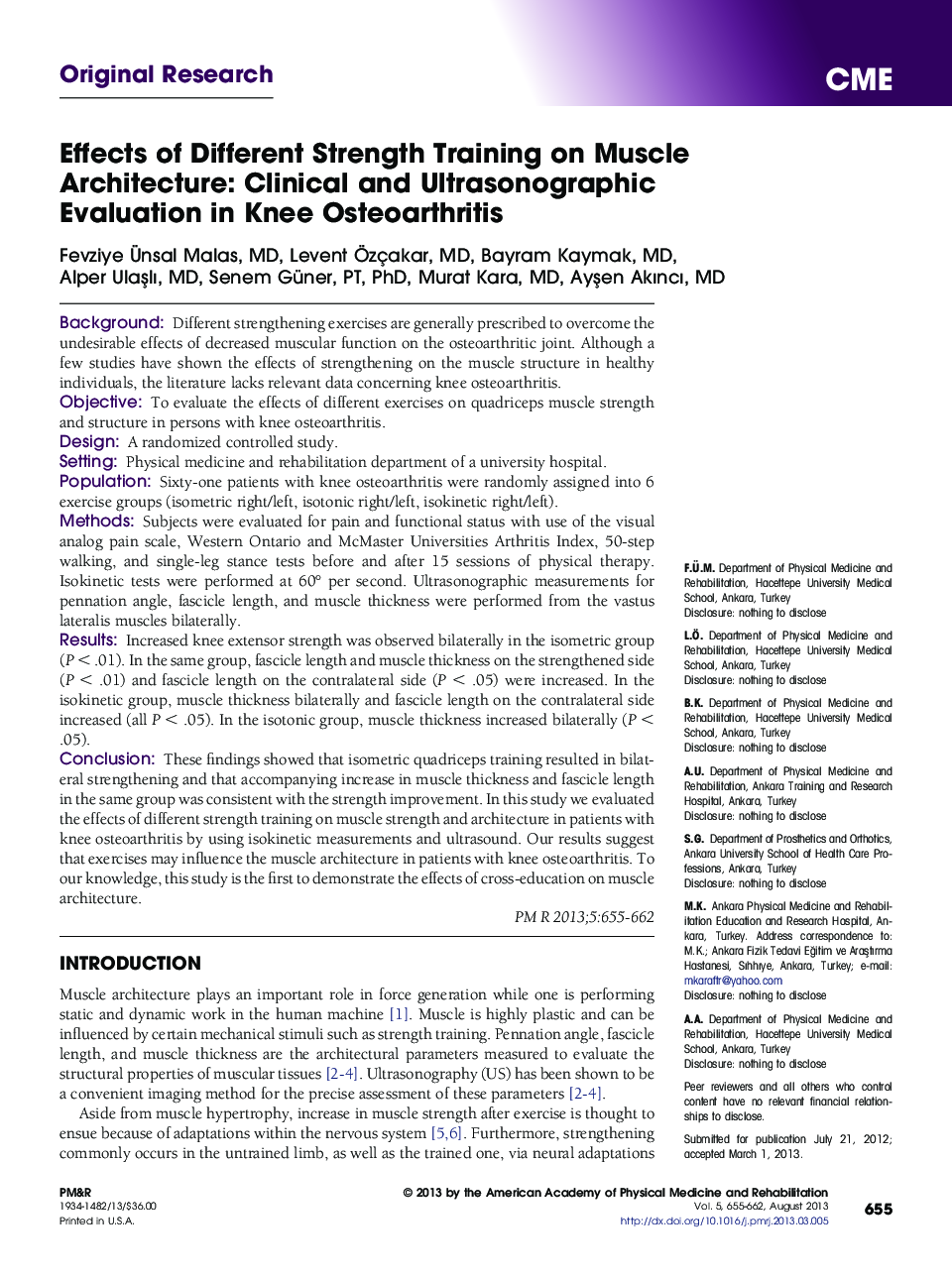| کد مقاله | کد نشریه | سال انتشار | مقاله انگلیسی | نسخه تمام متن |
|---|---|---|---|---|
| 2705552 | 1144749 | 2013 | 8 صفحه PDF | دانلود رایگان |

BackgroundDifferent strengthening exercises are generally prescribed to overcome the undesirable effects of decreased muscular function on the osteoarthritic joint. Although a few studies have shown the effects of strengthening on the muscle structure in healthy individuals, the literature lacks relevant data concerning knee osteoarthritis.ObjectiveTo evaluate the effects of different exercises on quadriceps muscle strength and structure in persons with knee osteoarthritis.DesignA randomized controlled study.SettingPhysical medicine and rehabilitation department of a university hospital.PopulationSixty-one patients with knee osteoarthritis were randomly assigned into 6 exercise groups (isometric right/left, isotonic right/left, isokinetic right/left).MethodsSubjects were evaluated for pain and functional status with use of the visual analog pain scale, Western Ontario and McMaster Universities Arthritis Index, 50-step walking, and single-leg stance tests before and after 15 sessions of physical therapy. Isokinetic tests were performed at 60° per second. Ultrasonographic measurements for pennation angle, fascicle length, and muscle thickness were performed from the vastus lateralis muscles bilaterally.ResultsIncreased knee extensor strength was observed bilaterally in the isometric group (P < .01). In the same group, fascicle length and muscle thickness on the strengthened side (P < .01) and fascicle length on the contralateral side (P < .05) were increased. In the isokinetic group, muscle thickness bilaterally and fascicle length on the contralateral side increased (all P < .05). In the isotonic group, muscle thickness increased bilaterally (P < .05).ConclusionThese findings showed that isometric quadriceps training resulted in bilateral strengthening and that accompanying increase in muscle thickness and fascicle length in the same group was consistent with the strength improvement. In this study we evaluated the effects of different strength training on muscle strength and architecture in patients with knee osteoarthritis by using isokinetic measurements and ultrasound. Our results suggest that exercises may influence the muscle architecture in patients with knee osteoarthritis. To our knowledge, this study is the first to demonstrate the effects of cross-education on muscle architecture.
Journal: PM&R - Volume 5, Issue 8, August 2013, Pages 655–662